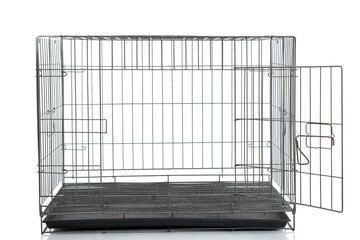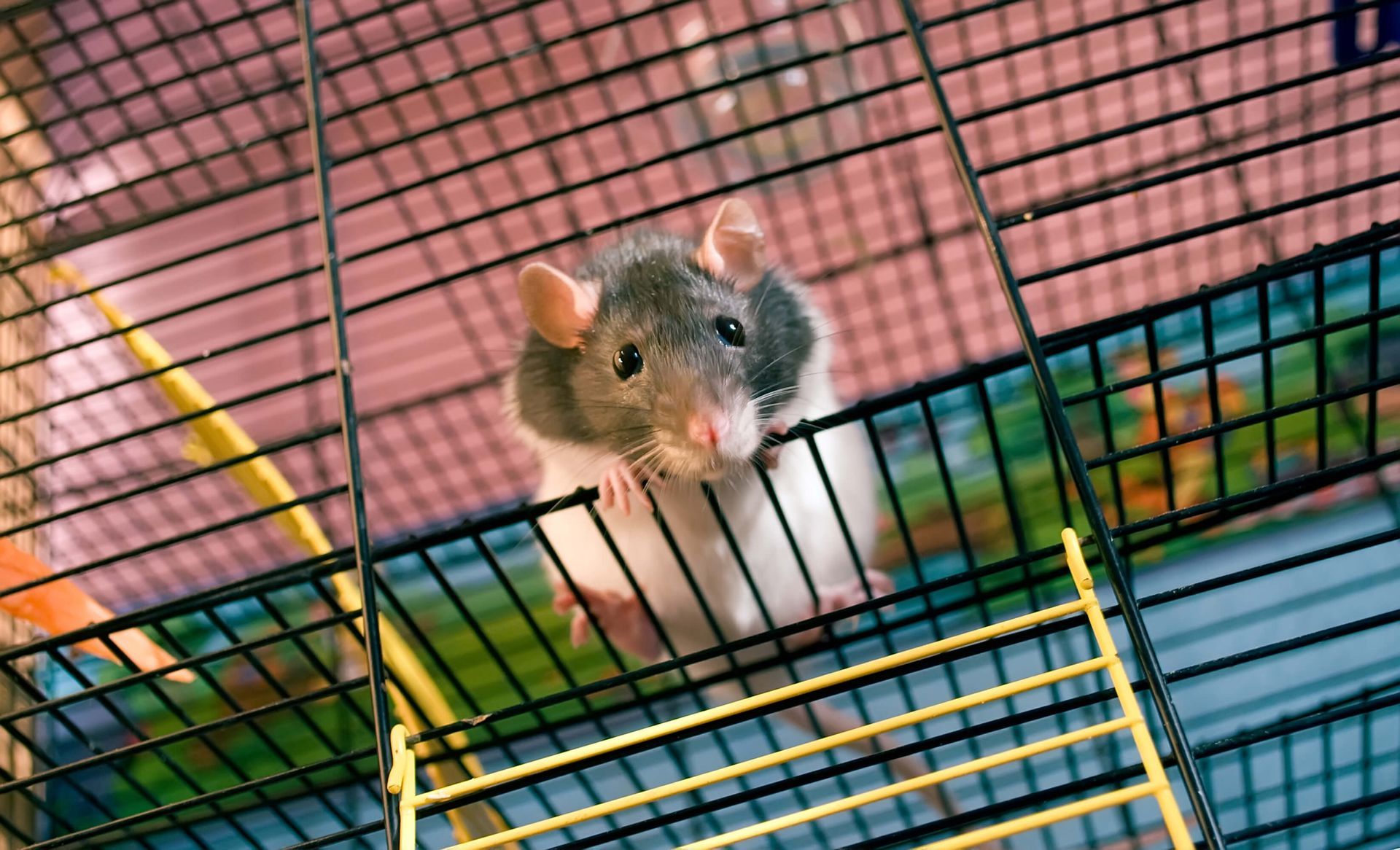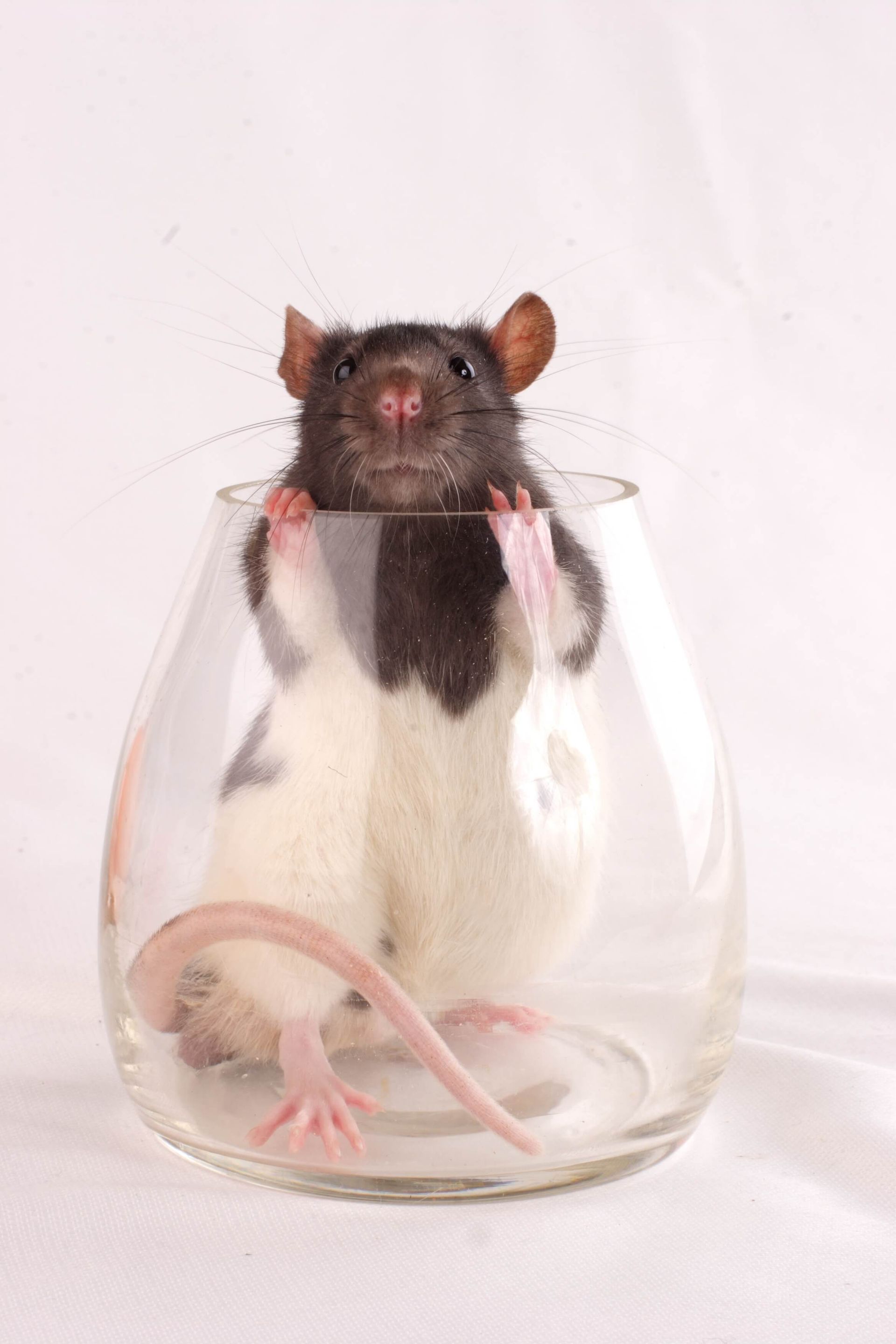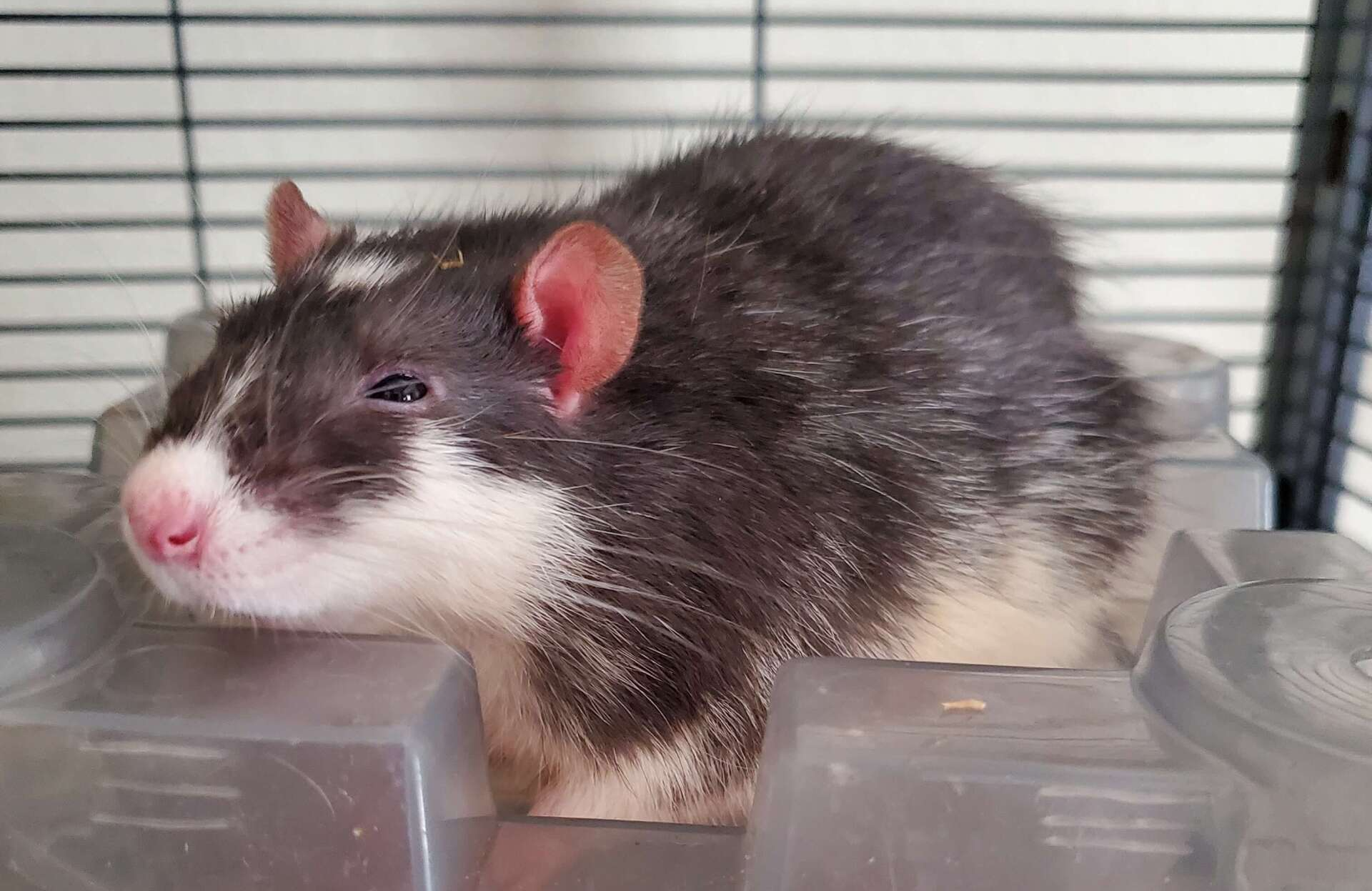Tips On Choosing And Setting Up A Rat Cage (With Pictures!)
This post contains affiliate links and I will be compensated if you make a purchase after clicking on my links.
Tips On Choosing And Setting Up A Rat Cage (With Pictures!)
When it comes to picking out and setting up a rat cage, there are many options. Whether you are new to owning pet rats and starting from scratch or just looking for an upgrade or ideas on how to spruce up your existing rat habitat, these tips will help!
The rat cage is going to be the most expensive upfront cost of getting your first rats, so it's best to get it right the first time to avoid having to buy multiple upgrades! In general, if you can afford it, metal cages are the best option, and the bigger the cage the better. You also want to be sure to find a cage with plenty of floorspace for your rats.
By choosing a rat cage carefully and with consideration, you will ensure your pet rats love it, and will be active and content. In this article we will not only cover your options, but answer common questions regarding rat cage setup and size.

Choosing The Right Cage For Your Rats
The size and type of cage you choose for your pet rats depends on the number of rats you have and their activity level. A popular rule is a single pet rat should have at least 2.5 cubic feet of space, while larger groups of rats will need more.
Your rat cage setup should take into account their current needs as well as the future needs of your beloved small pets.
If you are new to keeping rats, keep in mind you will need at least two rats of the same sex!
Metal cages are the most popular option because they provide plenty of ventilation and are sturdy and harder for the rats to escape from, but plastic, wire, or homemade cages can be used as well.
Types Of Cages
The four main types of cages available are metal, wire, plastic, and glass. If you are crafty, you also have the option to make a homemade or bin cage. We will cover the pros and cons of each for use as a rat cage, so you can make the best decision for your pet rats' new home!

Metal Cages
These cages are made of thicker metal bars and offer lots of ventilation and visibility. They are the most popular type of rat cage due to their sturdiness and size.
Pros:
- Durable, will last a long time
- Harder for rats to escape from
- Generally easy to clean
- Plenty of ventilation and visibility
Cons:
- Most expensive, especially if being shipped to certain countries
- A large cage that takes up a lot of room

Wire Cages
Wire cages are usually made of thinner metal bars and can come in various shapes and sizes. They are generally more affordable than metal cages, but not quite as durable.
Pros:
- Generally more affordable than metal cages
- Plenty of ventilation and visibility
- Various shapes and sizes available
Cons:
- Still a higher price range
- Not as secure or durable as metal cages
- Most have wire floors which need to be covered up to protect your rat's feet

Plastic Cages
Plastic cages tend to be a popular, affordable option for rat owners. They come in a variety of styles and colors and some offer the same visibility and ventilation as metal cages. However, they may not be the best choice for your main rat cage due to size and durability.
Pros:
- Affordable and come in a variety of styles and colors
- Easy to clean and maintain
- If they have a wire top, provide the same visibility and ventilation as a wire cage
Cons:
- Not as secure or durable as a metal or wire cage
- Rats can chew through plastic
- Tend to be on the smaller size of rat cages, so generally only good as a quarantine or hospital cage

Glass Tanks
I don't have a pros and cons list for glass enclosures because I do not have any pros for them. While you will see terrariums marketed as a rat cage, do not cage your rats in one of these!
Rats have sensitive respiratory systems and are prone to respiratory disease and lung infections. Not only are glass tanks too small, they offer little ventilation, highly increasing your rats' chances of developing health problems.
Even if you are cleaning the dirty bedding out of your rat's cage every day, you still run the risk. Any other cage is better than a glass tank.
Bin Cages
If you are feeling crafty, bin cages can be made from plastic storage bins with some modifications. This type of cage is generally the most affordable option, and you can customize it however you like.
Pros:
- Affordable hospital or breeding cage, or for taking in new rescues (quarantine period)
- Good for does and their baby rats
- Good for introductions
- Easy to clean
Cons:
- Rats can chew through plastic
- While better than glass, limited ventilation in comparison to other options
- Too small for regular use
Homemade Wooden Cages
For a more durable, regular use homemade cage, you can make a wooden cage, if you have the time and tools. These cages offer the most customization, but can be quite pricey to make!
Pros:
- Sturdy if you build it right
- Complete control over the design
- Can be customized to fit any space
- Can add on sections as you need for more rats
Cons:
- Expensive if you need to buy all the materials
- Time consuming and can require special tools
- Need to make sure you use safe, non-toxic materials
- Your rats will pee on it, and it's hard to clean and disinfect wood
- Rats chew wood
How Large Does My Rat's Cage Need To Be?
When it comes to cage size for your rats, bigger is always better! Per one rat the cage should have at least 2.5 cubic feet of space, so two rats should have at least 5 cubic feet or more.
Personally, I would recommend getting the biggest cage you can afford and/or fit in your home. Not only will this give you more space for providing mental stimulation for your rats in their cage, but will give you some buffer space for if you decide to add other rats in the future.
The size of the cage is also important for keeping the air clean in the cage and reducing respiratory problems.
Do Pet Rats Prefer A Vertical Or A Horizontal Rat Cage Setup?
Rats love exploring, and are natural foragers, so the best way to keep them entertained is with a cage that allows them to burrow in substrate. This can be done in a vertical or horizontal setup, although each have their pros and cons.
Vertical Rat Cage Setup
A vertical setup is great for giving your rats lots of vertical space to climb and explore. It is generally good for young rats and females.
Pros:
- Great for giving your rats lots of height to explore and climb up
- Allows you to have a larger cage setup using a smaller amount of floorspace
Cons:
- Can be harder to reach the rats on higher levels
- Not as easy to clean as a horizontal setup
- Not as much floor space for the rats
Horizontal Rat Cage Setup
A horizontal setup is great for allowing your rats plenty of ground space to explore, burrow, and run around. It is also sometimes necessary to transition to a horizontal cage setup if and older rat gets HLD or starts having other mobility issues.
Pros:
- Plenty of ground level space for your rats to explore and burrow in
- Easier to clean and decorate as it's closer to the ground
- Easier for older rats to get around
Cons:
- Limits the number of levels you can have in your cage
- If you have rats that like to climb, not much room to climb
Ultimately, it comes down to preference and what works best for your particular space. Both vertical and horizontal setups can offer plenty of opportunities for exploration, mental stimulation, and fun for your rats!
The Importance of Floorspace
You probably noticed floorspace was one of the pros and cons in the above sections. This is because the amount of floorspace a rat has is very important. Rats are larger rodents and need room to move around horizontally.
You can technically get a cage that meets the cubic feet rule, but if the cage is very tall with no or very small ledges, a lot of the space is air unless you pack it in with ladders, hammocks, ropes, and other such things.
But even then, your rats won't have much room to just walk or run around, hence the importance of prioritizing floor space as opposed to just size.
How To Setup Your Rats' Cage
Once you've chosen the perfect cage for your rats, it's time to set it up. Here are a few tips to make sure your rats have a safe and comfortable home:
- Place your rat cage setup in an area away from drafts and direct sunlight. Rats can get too hot or too cold, so it's important to keep them in a comfortable temperature.
- Loud noise can cause stress to your rats, so try to set their home up where it's a little quieter.
- If your cage has wire flooring, you can cut up cardboard boxes to cover the wire floor. Simply change it out for a new cardboard box whenever it gets dirty! You can also cover it up with other material such as plastic or turf to protect your rat's feet.
- Line the bottom of the cage with bedding they can dig in, such as shredded paper bedding or rat-safe wood shavings. Rats love to burrow, hide food, and create nests.
- Provide plenty of toys, hiding places, and other interesting items to use as nesting materials like paper towel rolls in the cage. This will help keep them entertained and discourage destructive behaviors.
By following these simple tips, you can create a comfortable and stimulating home that will help your rats feel safe and comfortable.
What Is The Best Rat Cage?
PSA - The following are what I believe to be the best rat cages for different scenarios and suggestions for new rat owners, this is my opinion and if you don't have one of these that doesn't make you a bad rat owner.
Just because you don't have the "most popular" cage doesn't mean your rats aren't perfectly happy and healthy, which is the most important part! That being said, here are what I believe make the best main rat cage, quarantine/hospital rat cage, and breeding/birthing cage if you find yourself in that situation.
Main Rat Cage
Critter Nations are my absolute favorite pet rat cage for general use. While they are expensive, they are metal, which means you will probably never need to buy another cage in your lifetime (unless you decide you want more rats).
They are also fairly easy to put together and take apart, and they clean easily. The cage doors allow quick access to your pet rats and decorating the cage is very customizable.
But the best part? You can buy add-ons to make it a double or even triple Critter Nation by adding the addition to the top of the cage! I currently have two doubles, which with a little customization (and a lot of zipties) can be turned into a quad.
Midwest also makes a Ferret Nation, but the cage bars are pretty wide apart, and because rats can fit through very small gaps I do not recommend purchasing.
I bought one of the Ferret Nation add-ons accidentally one time and tried to use it anyway, and one of my female adult rats was able to slip through easily and escape. Plus side, they were more than accomodating about it, and let me return the wrong item and shipped the one I meant to order right away!
If you live outside the U.S., Critter Nations can be quite expensive to purchase with shipping. In that case, I recommend any metal cage that meets your rats' requirements and has easy to open doors on the front of the cage.
Cages with small doors on the front of the cage like some birdcages work fine, but can be a pain to clean as it's hard to get the floor and levels out. These also tend to be very tall with little floorspace, so not ideal.
Quarantine/Hospital Rat Cage
For something short term or for travel, I like using the Ware Chew Proof Small Animal Cage. While quite small, it works well in keeping an injured or sick pet rat, or a pet rat who is healing from surgery, separate from your other rats while the isolated rat heals.
Because the bottom is metal, your pet rat won't be able to chew through it, and you can have peace of mind knowing your pet rat can focus on healing in peace.
I have also used this cage when I am bringing in a small group of rescues and need to keep them quarantined from my main mischief. When using it for this purpose I set it up in the bathroom or another free-roam appropriate area where I can open the rat's cage and let them roam so they don't feel so cooped up.
This cage also fits well in the backseat of a car and is perfect for transporting your rats when moving.

Breeding/Birthing Rat Cage Setup
While I am not a breeder, and have no desire at the moment to breed rats (there are plenty wonderful breeders out there already), I have seen bin cages and racks used a lot for breeding and birthing.
While I do not recommend breeding your own rats without heavy research and mentorship from an established breeder, if you find yourself in a situation with a pregnant doe, the best kind of environment to put her in before she gives birth to her baby rats is a bin cage.
Baby rats are small and fragile and can fall through very small gaps. If the cage is high up or the doe is not able to get to them, this means the death of the baby rat.
A plastic bin with a window cut out on each side and the top and wire mesh placed over works well in this situation. Provide the mother rat's cage with a nest box and soft material that she can nest with like paper towels. Avoid bedding that can harm a baby rat, like shredded paper, wood bedding, or fabric with holes in it.
Where Can I Buy A Rat Cage?
Rat cages can be found in pet stores, on websites like Chewy or Amazon, or secondhand on Facebook Marketplace or Craigslist. While buying from a pet store or online retailer is the most convenient and usually fastest way to get your hands on one, if you're looking to save money you can spend time searching for a deal.
When buying secondhand, make sure you thoroughly inspect the cage before giving the seller any money, as there are a lot of scammers out there. You will want to be sure it's relatively clean, and has all its parts that are needed to put it together.
How Many Rats Can Fit In One Cage?
This is a common question I see asked, and you can follow the calculation of 2.5 cubic feet per single rat for a general guideline. However, I highly recommend having more than just the minimum requirements and providing your rats with as much space and enrichment as you can, including plenty of floorspace.
The amount of rats that can fit also depends on the rats themselves and their lifestyles. Some pet rats that get a lot of free roam time and enrichment outside the cage may not need something as big as pet rats that spend the majority of the time in their cage.

What Should I Put In My Rat Cage?
To keep your pet rats happy and entertained, it's important to provide plenty of toys, things to climb on, hiding places, and other interesting items.
These can range from purchased items (bird toys make great rat toys) to items that would normally be thrown away or recycled, like toilet paper tubes or an empty cardboard box.
Hammocks are a must have, and can be purchased at a pet shop or from a small business, or made yourself! Sputniks are also a big hit with my rats.
If you aren't using deep substrate, or are using fleece for bedding, consider putting in a digging box to keep your pet rats entertained.
PVC pipes also make great tunnels if they are large enough, and are a great addition to your rat cage setup.
Lastly, make sure you have multiple water bottles in case one stops working or drains, and some food bowls (unless you scatter feed your pet rats).
Where Can I Find Cool Rat Enclosure Ideas?
If you're stuck on how to decorate, and looking for inspiration for your rat cage setup, check out some of the amazing photos and ideas creators have shared on Instagram or Pinterest.
YouTube is also a great place to look up rat cage tours and get inspiration for your own setup. There are plenty of creative people who have turned their rat cage setup into unique works of art!
What Do I Do If My Bar Spacing Is Too Wide?
If the spacing of the bars in your cage is too wide, you can use chicken wire or some other metal mesh to cover the wide spacing of the bars. This will help prevent your rats from escaping and keep them safe. It will also make sure other critters that pose a threat like wild rats can't get in.
If your adult rats can escape throught the bars and you can afford it, I recommend selling the cage and getting a new one with smaller bar spacing. However, if you just need to keep young rats in until the are too big to escape, or can't afford a new cage, wrapping is a viable option.
When wrapping with chicken wire or other thin wire, be extra careful there are no sharp points that can hurt your rats!
Why Can't I Keep Just One Rat In A Smaller Size Cage?
In The Importance Of A Mischief, I break down how vital it is for your pet rat to have at the very least one other same sex rat companion. While it may seem cheaper and easier to get a smaller cage and just one pet rat, especially when often the pet store you may be purchasing from promotes it, if you want to give your rats a happy life you will need two or more.
How many rats you get past that is up to you, but just like the size of their setup, bigger is better! Just be sure to make sure you have the budget for it, so you can give your rats the best life possible!

How Do I Adapt My Rat Cage Setup When I Get More Rats?
When you get more rats, it's important to make sure that their cage is large enough for the additional residents. Depending on the size and adaptability of your cage, this could mean adding an addition, customizing your cage, or you may already have one big enough to house the new additions.
You also may need to adjust the setup if you are keeping rats together of varying age groups, and some of the older ones lose too much mobility to safely navigate a vertical setup.
New pet rats will need to be properly introduced to your existing mischief. If you are going to use the carrier method or cage swap method you will need mutliple cages, possibly of varying sizes (for the carrier method) as you'll want to slowly increase the size of the "territory" of the rats.
For example: carrier -> bin cage -> small single level -> main large cage (though some pet rats move through the steps of introduction faster than others)
Do Male Rats Need A Different Kind Of Cage Setup Than Female Rats?
No, male and female rats don't require different kinds of cages. However, it's important to note that male rats tend to be larger than females, so they may need more space.
Also, if not all your rats get along very well, it's important to provide enough space and hiding spots so that no one feels overcrowded or stressed.
When I had males I noticed some of them needed a little more space to "cool off" sometimes, whereas my females have always been a very tight knit group.

Get To Creating Your Dream Rat Cage Setup!
Setting up a rat cage is an exciting task! With these tips, you'll be sure to create the perfect home for your small pets. Create an interesting and stimulating environment that offers plenty of space and comfort - this will help keep your rats happy and healthy.
Have some cool rat cage setup ideas? Let me know!



